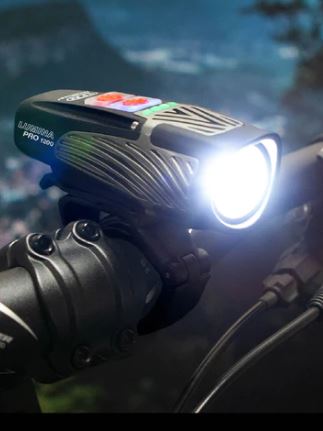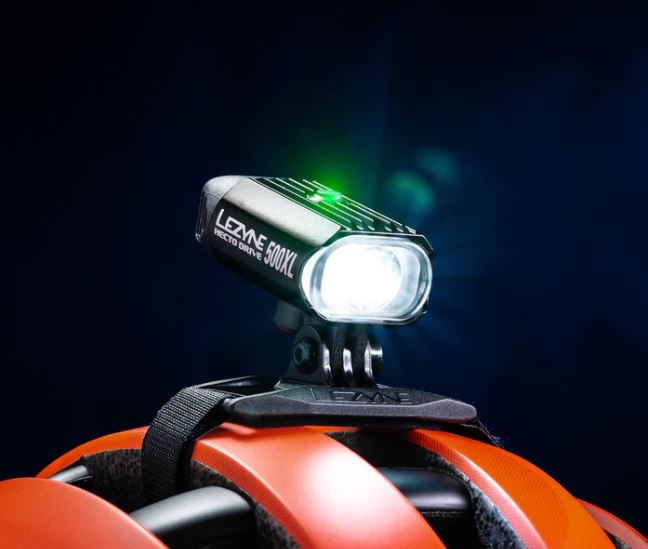Understanding the Importance of Lumens in Bicycle Lights: Why Is It Important?

Key Point Summary of The Importance of Lumens in Bicycle Lights:
- Lumens Measure Brightness: Lumens are the unit of measurement that indicates the total amount of visible light emitted by a source, such as a bicycle light.
- More Lumens, More Brightness: Generally, a higher lumen count means a brighter light, improving both visibility and safety during night rides.
- Balance is Key: While more lumens offer greater visibility, they also typically require more power, affecting battery life.
- Context Matters: The ideal lumen count varies depending on your riding environment—urban settings with streetlights may require fewer lumens than completely dark rural or trail rides.
Navigating the world of bicycle lights can feel like traversing a dimly lit path—ironic, isn’t it? As a masters cyclist who has spent years racing and riding across various terrains, from the rugged trails of mountain biking to the unpredictable paths of cyclocross and the open roads frequented by gravel bikes, I’ve learned the critical role that lumens play in bicycle lighting. This article aims to shine a bright light on lumens, helping beginner to mid-level cyclists make informed decisions about their bicycle lighting needs.
Lumens Explained: The Beacon in the Night
Lumens are to light what gallons are to milk—a measure of quantity. When it comes to bicycle lights, this quantity translates to brightness. The higher the lumens, the more light you have illuminating your path or making you visible to others. However, more isn’t always better. The right amount of lumens depends on where you’re riding and what obstacles or hazards you need to see or be seen by.

Why Lumens Matter: A Brighter Path to Safety
The significance of lumens in bicycle lights cannot be overstated. Riding in low-light conditions without adequate illumination is akin to flying blind—risky at best, potentially catastrophic at worst. Lumens directly impact your ability to navigate safely, highlighting obstacles on the path ahead and ensuring you’re visible to motorists, pedestrians, and other cyclists.
In my early days of night riding, I equipped my bike with the first light I found in my garage—a basic, low-lumen light that was more of a gesture than a genuine safety tool. It wasn’t long before I found myself squinting to decipher the terrain ahead, a situation that quickly proved untenable. This experience taught me the invaluable lesson that when it comes to lumens, adequacy is key.
Choosing Your Lumens: A Light for Every Ride
Deciding on the right amount of lumens isn’t a one-size-fits-all equation. For urban environments, where streetlights offer supplementary illumination, a front light ranging from 50 to 300 lumens may suffice. However, when venturing into areas without ambient lighting—be it rural roads or mountain trails—lights with 600 lumens or more become necessary to adequately light the way.
Rear lights generally require fewer lumens, as their primary purpose is to make you visible to others—a task that doesn’t necessitate the same level of brightness as illuminating your path. Here, even 10-50 lumens can be effective, especially if the light offers a flashing mode to catch the eye of those behind you.
The Balancing Act: Lumens, Battery Life, and Visibility
High-lumen lights are undeniably effective at improving visibility, but they also demand more from your battery. This trade-off requires careful consideration, particularly for long rides or when riding in areas where charging facilities are scarce. Many modern lights offer variable settings, allowing cyclists to adjust brightness according to the conditions and conserve battery life as needed.
My journey into night riding reached a turning point when I invested in a high-lumen light with adjustable settings. The ability to switch between modes based on the specific conditions of my ride—not only made my night rides safer but also more enjoyable. No longer was I constrained by a one-setting-fits-all light; I could adapt my illumination to match the environment, whether that meant dialing up the lumens on dark trails or conserving power on well-lit urban streets.
Navigating the Lumens Landscape: Tips for Cyclists
When selecting a bicycle light, consider the following tips to ensure you find a balance that meets your needs:
- Assess Your Riding Conditions: Tailor your lumen needs to your most common riding environments. More isolated or darker routes demand higher lumens for safe navigation.
- Consider Battery Life: Opt for lights with adjustable settings to extend battery life on longer rides.
- Visibility Overkill Isn’t Always Necessary: While it’s better to err on the side of caution, excessively bright lights can be a nuisance—or even dangerous—to other road users. Choose a light that offers sufficient visibility without overwhelming.
- Test in Real Conditions: If possible, test lights in conditions similar to those you typically ride in. A light that seems powerful in a brightly lit store may perform differently on a dark road or trail.

Conclusion: Illuminating Your Rides with Confidence
Choosing the right bicycle light is a crucial step in ensuring your night rides are both enjoyable and safe. Lumens play a pivotal role in this process, acting as a guide to help you navigate the vast array of lighting options available. By understanding the importance of lumens and how they affect visibility and battery life, you can make informed decisions that enhance your riding experience, regardless of the time of day.
As someone who has navigated the transition from day to night riding across various cycling disciplines, I can attest to the transformative power of the right light. It not only illuminates the path ahead but also ensures you remain a visible, integral part of the nocturnal landscape. So, equip your bike with the light that best suits your needs and let the lumens lead the way to countless safe and memorable rides under the stars.
Recapping the insights from the discussion on the importance of lumens in bicycle lights, here are some of the best bike lights that cater to various needs, from urban commutes to adventurous trail rides. These selections are based on their lumen output, versatility, battery life, and overall performance, ensuring that riders have the visibility they need for safe and enjoyable night cycling.
1. Bontrager Ion Pro RT Front Bike Light
- Lumens: Up to 1300
- Features: This powerful front light is designed for all types of rides, offering high visibility on both urban streets and dark trails. It features multiple modes, including a daytime running light, and is USB rechargeable. The Ion Pro RT also allows for wireless control and connectivity, making it easy to adjust settings on the go.
2. NiteRider Lumina OLED 1200 Boost
- Lumens: 1200
- Features: The Lumina OLED 1200 Boost stands out with its clear OLED display, showing battery life and light mode information at a glance. It offers a solid balance of power and portability, with five light levels plus daytime flash mode for increased visibility during both day and night rides.
3. Knog PWR Trail 1100
- Lumens: 1100
- Features: Unique for its modular design, the PWR Trail not only serves as a high-output light but also as a power bank for charging other devices. It’s versatile, with a range of mounting options and light modes, including a programmable mode to tailor brightness and runtime to your specific needs.
John

FAQ
How many lumens is good for a bike light?
For urban riding, 50-200 lumens for rear lights and 500-800 lumens for front lights are usually sufficient. For darker, rural, or off-road paths, front lights with 800-1200 lumens or more are recommended.
Is 200 lumens good for a bike light?
Yes, 200 lumens can be good for urban riding and as a rear light, offering enough visibility for most city conditions. However, for front lights in unlit areas, more lumens might be needed.
What is the difference between lumens and lux in bike lights?
Lumens measure the total amount of light emitted by a source (total light output), while lux measures the intensity of light on a surface (light output per unit area). Lumens tell you how bright a light is, and lux shows how concentrated or spread out the light beam is on a specific area.
How important are bike lights?
Bike lights are crucial for safety during low-light or nighttime riding. They provide visibility for the rider, allowing them to see the road and obstacles ahead, and make the cyclist visible to other road users, reducing the risk of accidents.





